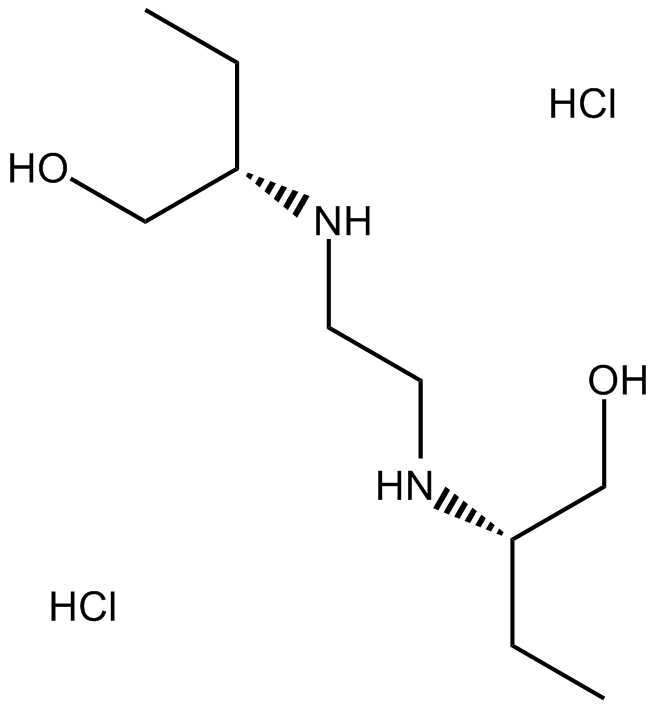Ethambutol dihydrochloride
Ethambutol dihydrochloride (CAS 1070-11-7) is an orally bioavailable synthetic antimicrobial compound, functioning as an inhibitor of arabinosyl transferase in mycobacterial cell walls and exhibiting antimycobacterial activity in Mycobacterium tuberculosis and related species. Additionally, it impedes the synthesis of cell wall arabinogalactan by interfering with the transfer of arabinose units, thereby compromising cell wall integrity.
In in vitro experimental models, Ethambutol dihydrochloride demonstrates inhibitory effects on the growth of various Mycobacterium species with [IC50/EC50 values not specified], tested against [ mycobacterial strains]. It can also disrupt essential cell wall biosynthesis pathways, leading to increased permeability and susceptibility to host immune defenses or other antimicrobial agents. Furthermore, Ethambutol dihydrochloride’s mechanism of action results in a bacteriostatic effect, limiting the proliferation of mycobacteria rather than inducing direct cell lysis.
In a pharmacological and clinical setting, Ethambutol dihydrochloride is widely used for the treatment and management of tuberculosis, often as part of combination therapy regimens to prevent the development of drug resistance. Its application extends to studies investigating novel antimycobacterial strategies, drug resistance mechanisms, and development of new therapeutics for tuberculosis and other mycobacterial infections.
| Physical Appearance | A solid |
| Storage | Store at -20°C |
| M.Wt | 277.23 |
| Cas No. | 1070-11-7 |
| Formula | C10H24N2O2·2HCl |
| Synonyms | Ethambutol 2HCl;Emb dihydrochloride; CL40881 |
| Solubility | ≥12.65 mg/mL in DMSO |
| Chemical Name | 2-[2-(1-hydroxybutan-2-ylamino)ethylamino]butan-1-ol;dihydrochloride |
| SDF | Download SDF |
| Canonical SMILES | CCC(CO)NCCNC(CC)CO.Cl.Cl |
| Shipping Condition | Small Molecules with Blue Ice, Modified Nucleotides with Dry Ice. |
| General tips | We do not recommend long-term storage for the solution, please use it up soon. |
Quality Control & MSDS
- View current batch:
Chemical structure









